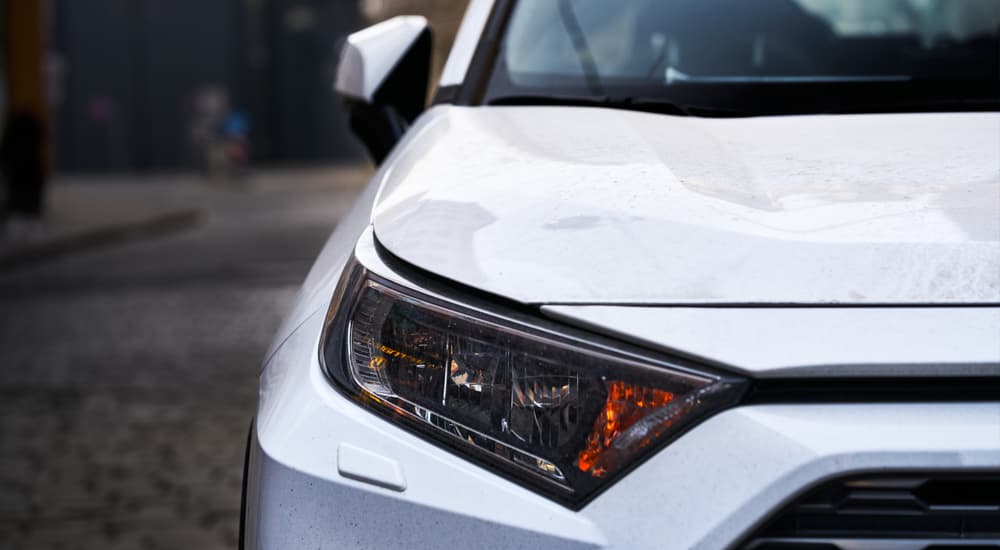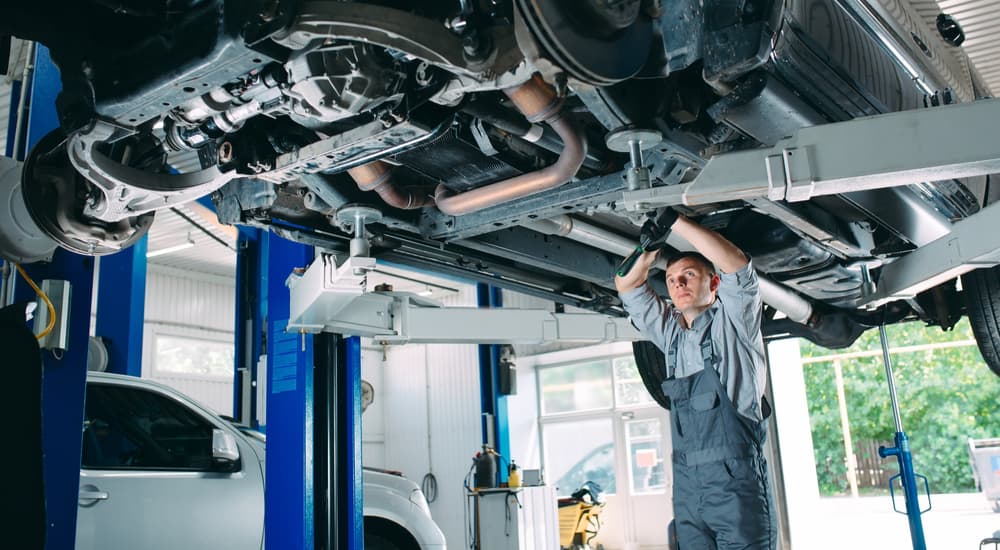November 12, 2008: a date that will live in infamy for the unimaginably small number of automotive enthusiasts who are aware of it. That was the month that the death sentence was announced for automotive style by the United Nations Economic Commission for Europe (UNECE). If you fondly remember the unique styling of the aggressive muscle cars of the ‘60s or the iconic imports of the ‘90s and wonder why modern cars are all unimaginative blobs in comparison, well, the UNECE and Global Technical Regulation No. 9 (Pedestrian Safety) are the reason why.
But let’s wind things back a little to provide some background for the vast majority of readers who are unaware of GTR No.9, the UNECE, or why the UN set its sights on how cars look in the first place. The UNECE is one of the UN Economic and Social Council’s five “regional commissions” covering not only Europe but also the United States, Canada, Russia, and the former Soviet nations of the Middle East. The UNECE sticks its nose in just about everything, and on June 25, 1998, it drew up a document blandly titled, “Agreement Concerning the Establishing of Global Technical Regulations for Wheeled Vehicles, Equipment, and Parts Which Can Be Fitted And/Or Be Used on Wheeled Vehicles.”
In said document, the organization created an “Executive Council” that would review all automotive regulatory proposals submitted by any member nation and include the ones it deemed necessary in a “Global Registry” of international automobile design standards. Ten years later, after establishing standards on vital components such as door locks (GTR No. 1), motorcycle brakes (GTR No. 3), and windshield safety glazing (GTR No. 6), the Executive Council turned its attention to the subject of pedestrian safety and published the infamous GTR No.9. In a victory for unaccountable faceless foreign bureaucrats everywhere, this wide-ranging “proposal” sought to address the “protection of pedestrians and other vulnerable road users in collision with vehicles” by mandating certain vehicle design characteristics.
The Chilling Effect of GTR No. 9
Before we continue, it should be made clear that the United States is not currently bound by the mandates of GTR No. 9. In fact, the United States has long been something of a maverick in the world of international pedestrian safety, ending our program to develop pedestrian safety design standards in 1991 after the NHTSA concluded it was not an effective use of its authority. And while the United States is a signatory to the 1998 Agreement, we have preferred to work with the more informal and somewhat mysterious International Harmonized Research Activities Pedestrian Safety Working Group. While the United States is obligated to “consider” the recommendations of the UNECE, the NHTSA has dragged its feet on GTR No. 9 (of course, the NHTSA drags its feet on virtually everything, so there is no telling if GTR No. 9 will eventually be adopted).
However, car manufacturers are international corporations, and very few of them design models solely for the American market. Even if a model is designed purely for Americans, the car manufacturers will usually play it safe and incorporate any standards they think might be in the pipeline in order to keep the car from being deemed illegal halfway through its planned lifecycle. That means that whether we officially adopt the UNECE’s proposals or not, we usually end up having to deal with the results regardless. In fact, according to interviews conducted by the Government Accountability Office, 90% of automakers made major car safety decisions based on European standards, while only 27% followed American standards. Hence, our roads are now flooded with anonymous blobs largely devoid of any unique styling.
What’s Changed Since 2008?
Now that we have gone over the bureaucratic background, let’s take a closer look at some of the ways that pedestrian safety standards have changed car design in the real world. While some of the changes are fairly obvious ones, you might be surprised to learn just how much GTR No. 9 has influenced car design and produced the current crop of vehicles on the market. Some of the changes are incredibly subtle but have resulted in some interesting ramifications.
1. Missing Hood Ornaments
Do you remember how every Mercedes and Jaguar used to come with a trademark hood ornament proclaiming the brand? Ever notice how those automotive icons are now gone from recent models and replaced with small flat badges? Well, you can thank pedestrian safety standards for that change. While hood ornaments are not explicitly banned, and you can still find them on some higher-end models and trims, they must comply with pedestrian safety standards and either breakaway or fold down when hit.
2. No Pop-Up Headlights
While hood ornaments used to be the mark of a luxury car, sports car enthusiasts are likely more disappointed by the demise of pop-up headlights. Found on seemingly every cool car from the ‘80s and ‘90s, pop-up headlights improved aerodynamics and let you say hello whenever you passed another cool car on the street (you could even use them to disorient your opponent when dogfighting on the tongue). However, changing pedestrian safety standards killed this fun feature, and they were last found on a handful of early 2000s models like the NA Miata and C5 Corvette shortly before GTR No.9 took effect.
3. Higher Hoods
While the elimination of sharp projections on the front of cars is an obvious, if unfortunate, side effect of tightening pedestrian safety standards, a less obvious but even more important change was the requirement for higher hoods. Researchers determined that one of the leading causes of serious injury was when the pedestrian’s head hit the engine block, and the solution was to mandate a sizable air gap between the bottom of the hood and the top of the engine. The higher hood line has been the number one contributor to the bulbous look of modern cars and has led to an overall growth in the height of cars.
2. Larger Wheels
One of the many examples of how the mandate for a higher hood line has changed cars as a whole is the market trend towards larger wheels. Because of the higher hood and corresponding higher beltline, manufacturers have installed larger and larger wheels to maintain their desired proportions. For instance, back before GTR No. 9, the Camry and Accord came with 15-inch wheels standard and topped out at 17-inch wheels from the factory. Now, 17-inch wheels are standard on both models, and they have 19-inch factory options. Larger wheels, in turn, mean more expensive tires and usually lower efficiency.
5. More Expensive Repairs
Fortunately, this change has yet to make it to the United States, but it is likely coming soon. The current NHTSA car bumper standards are not actually designed to protect pedestrians. In fact, the standards date back to 1972 and were intended to protect cars from excessive damage in low-speed crashes. In a typical example of the unintentional results of “helpful” regulation, studies later determined that rather than saving consumers money, the more durable mandated bumpers were actually costing drivers an extra $150-200 dollars over the life of a car ($500-675 in today’s money) and, in a less typical example of bureaucratic responsiveness, the NHTSA actually rolled back bumper standards to what we have today. However, European manufacturers are now designing super soft bumpers that are designed to protect pedestrians at the cost of durability.
6. Too Much Grille
Have you noticed that the grilles on cars are getting ridiculously large? From the widely-mocked snouts on the latest BMW models to the models where it seems like the entire front is nothing but grille (hello Toyota Avalon), the demand for smooth and soft frontends has apparently left manufacturers with few options for distinguishing their designs beyond devising the most outlandish grilles imaginable. The worst part is that if you look closely at them, usually over half the “grille” is backed by black plastic to keep air from entering, making the design mostly non-functional.
Will We Have Cool Cars Again?
Unfortunately, once regulations are in place, they aren’t usually lifted. As much as they are missed by car enthusiasts, it is extremely unlikely that we will ever see a reemergence of hood ornaments or pop-up headlights (although the Ares Panther proved that you can make pop-up headlights compliant with even European pedestrian safety standards–providing you’re willing to spend three-quarters of a million dollars on a hand-built car). However, we probably won’t see any more significant changes to car design in the name of pedestrian safety in the near future. With the low-hanging fruit picked, the UNECE and national safety agencies have largely turned their attention from physical design features that mitigate pedestrian injuries to the implementation of driver-assist technologies that will avoid crashes altogether. We’ll just have to see if the manufacturers can figure out how to design cool cars again within the current regulations.





